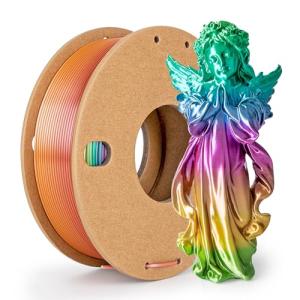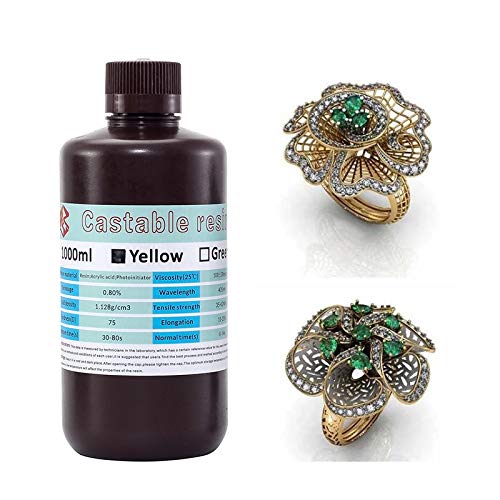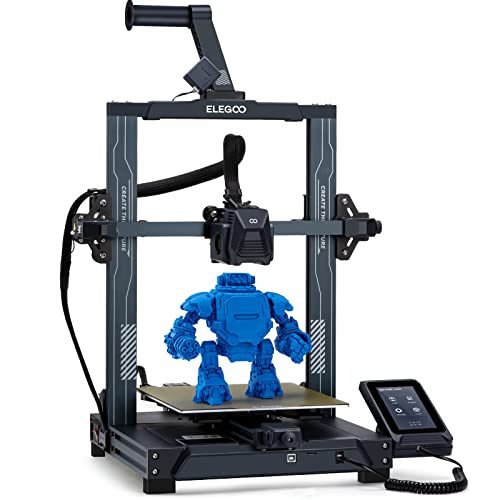SLA printers shine when it comes to fine detail. If you’re aiming for high-resolution models with intricate designs, these printers are your best friends. Using a process called stereolithography, they work by curing resin layer by layer with a laser. This means you get the smoothest surfaces and the most precise details compared to other methods.
If you’re into miniatures, jewelry, or even dental models, SLA technology is a game-changer. The level of detail you can achieve is impressive. Tiny features that would get lost in an FDM print come out crisp and clear. You can create pieces with tiny text or complicated textures that look stunning once finished.
SLA printers do come with their quirks. The resin can be a bit messy to work with, and there’s some post-processing involved, like washing and curing your prints. But if detail is your priority, the extra effort is totally worth it. The payoff in quality will make your models stand out in any crowd.
When comparing SLA vs FDM 3D printers, it's clear that SLA holds a strong advantage in detail-oriented projects. If fine craftsmanship is your goal, you’ll want to give SLA a serious look. Whether you’re making prototypes or just exploring your creative side, these printers can help you reach that next level.
FDM Printers for Quick Builds
If you’re looking for speed when it comes to 3D printing, FDM printers are a solid choice. These machines use melted filament to create your designs layer by layer, which means they can whip out your projects in a fraction of the time compared to other methods like SLA. So, if you need something printed quickly, FDM is usually the way to go.
One of the best features of FDM printers is their versatility. You can use a wide range of materials, from basic PLA to tougher ABS, and even flexible filaments. This allows you to print everything from simple prototypes to complex functional parts without breaking a sweat. Plus, maintenance is usually simpler and cheaper compared to SLA printers, so you can keep printing without too much hassle.
Don’t forget about the learning curve! FDM printers are generally easier for beginners to pick up and use. With basic setup and calibration, you can often get started in no time. This makes them a favorite for hobbyists and those new to the 3D printing world.
When you're weighing the options in the SLA vs FDM 3D Printers debate, consider how you plan to use your printer. If speed, versatility, and simplicity are what you need, you might find that FDM printers fit the bill perfectly. They can handle a range of projects without demanding too much from you, making the printing experience enjoyable and efficient.
Silk Rainbow PLA Filament 1.75mm for FDM Printers
Brighten up your 3D prints with this vibrant Silk Rainbow PLA that adds a splash of color to every creation
Product information
$5.69
Product Review Score
4.71 out of 5 stars
73 reviewsProduct links
Comparing Costs and Maintenance Needs
When diving into the world of 3D printing, understanding costs is a big deal. With SLA vs FDM 3D Printers, there's a clear difference in both initial investment and ongoing expenses. FDM printers tend to be more budget-friendly upfront. You can find decent models without breaking the bank, often starting at a few hundred bucks. On the flip side, SLA printers usually come with a higher price tag. If you're looking at professional-grade options, expect to pay quite a bit more.
Now, let's chat about materials. FDM printers use plastic filament, which is pretty inexpensive and widely available. You can snag a spool for under $20, and it lasts a while. SLA printers need resin, which can get pricey and might run you around $30 to $50 for a decent bottle. Plus, the resin can be a bit messier to handle, which leads us to maintenance.
Maintenance needs add to the cost equation. FDM printers are generally easier to maintain. You might just have to clean some parts and occasionally replace nozzles. SLA printers require a bit more care. After each print, you'll need to clean your build plate and resin vat properly. Don’t forget protective gear, too — working with resin can get a bit tricky if you’re not careful.
So, think about your priorities. If you're keen on price and lower upkeep, FDM might fit you better. But if you're after detailed prints and don’t mind spending a little extra on maintenance, then check out SLA. The choice really comes down to what you want to create and how much time and money you're ready to invest with the SLA vs FDM 3D Printers debate.
Castable Resin for LCD 3D Printers - 1000ml
Get smooth, detailed prints with this high-quality castable resin designed for LCD 3D printers
Product information
$110.00
Product Review Score
4.34 out of 5 stars
174 reviewsProduct links
Choosing the Right Technology for You
When diving into the world of 3D printing, picking the right technology can feel overwhelming. You've probably heard a lot about SLA vs FDM 3D Printers, but what do those terms even mean for you?
SLA, or Stereolithography, uses a laser to solidify liquid resin layer by layer. This method is great for producing super detailed prints, making it a favorite for jewelry, dental models, and miniatures. If you're after fine details and a smooth finish, SLA is definitely worth considering.
On the flip side, we have FDM, or Fused Deposition Modeling. This one works by melting plastic filament and layering it down to build your model. FDM printers are generally user-friendly, cost-effective, and perfect for prototyping or larger projects. If you want a sturdy object without breaking the bank, FDM might be your best bet.
Think about what you want to create. Are you looking for intricate details, or do you need something that can handle the rough and tumble? Weigh the pros and cons of SLA vs FDM 3D Printers based on your specific needs. Don't forget to factor in things like budget, print speed, and ease of use.
Ultimately, it's all about what aligns best with your goals. Both technologies have their strengths, so choose wisely and get ready to bring your ideas to life!





